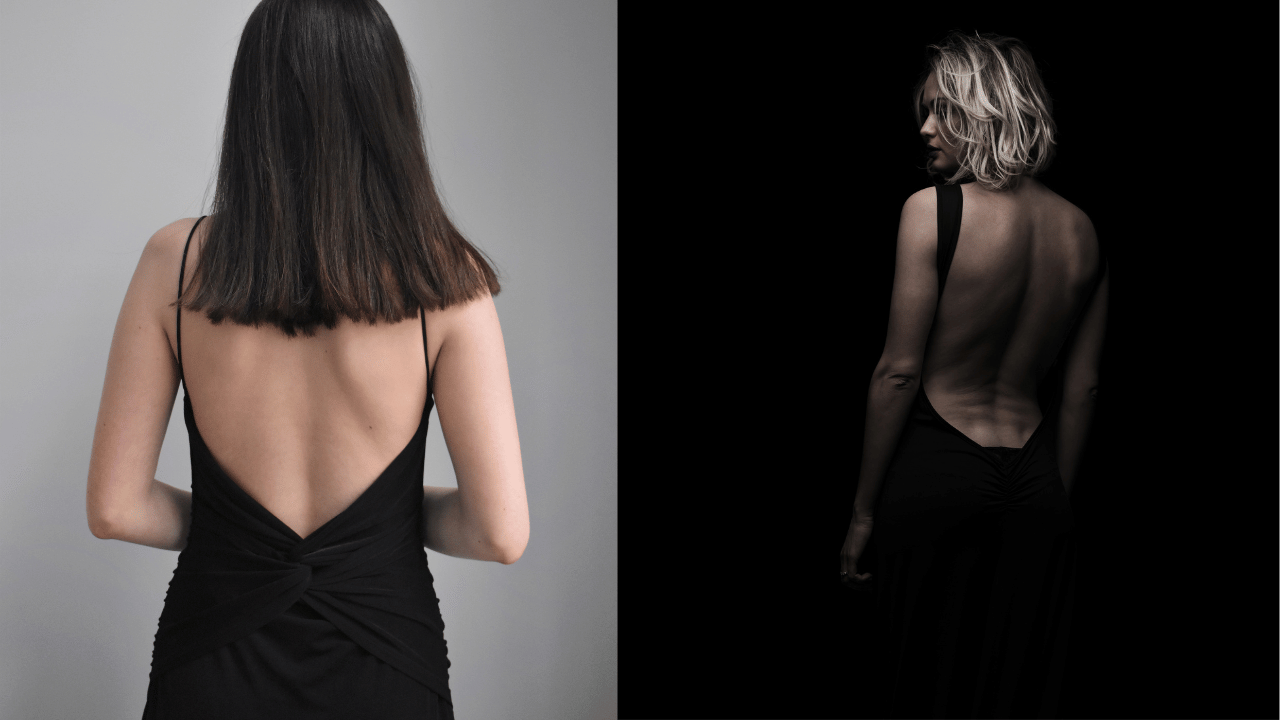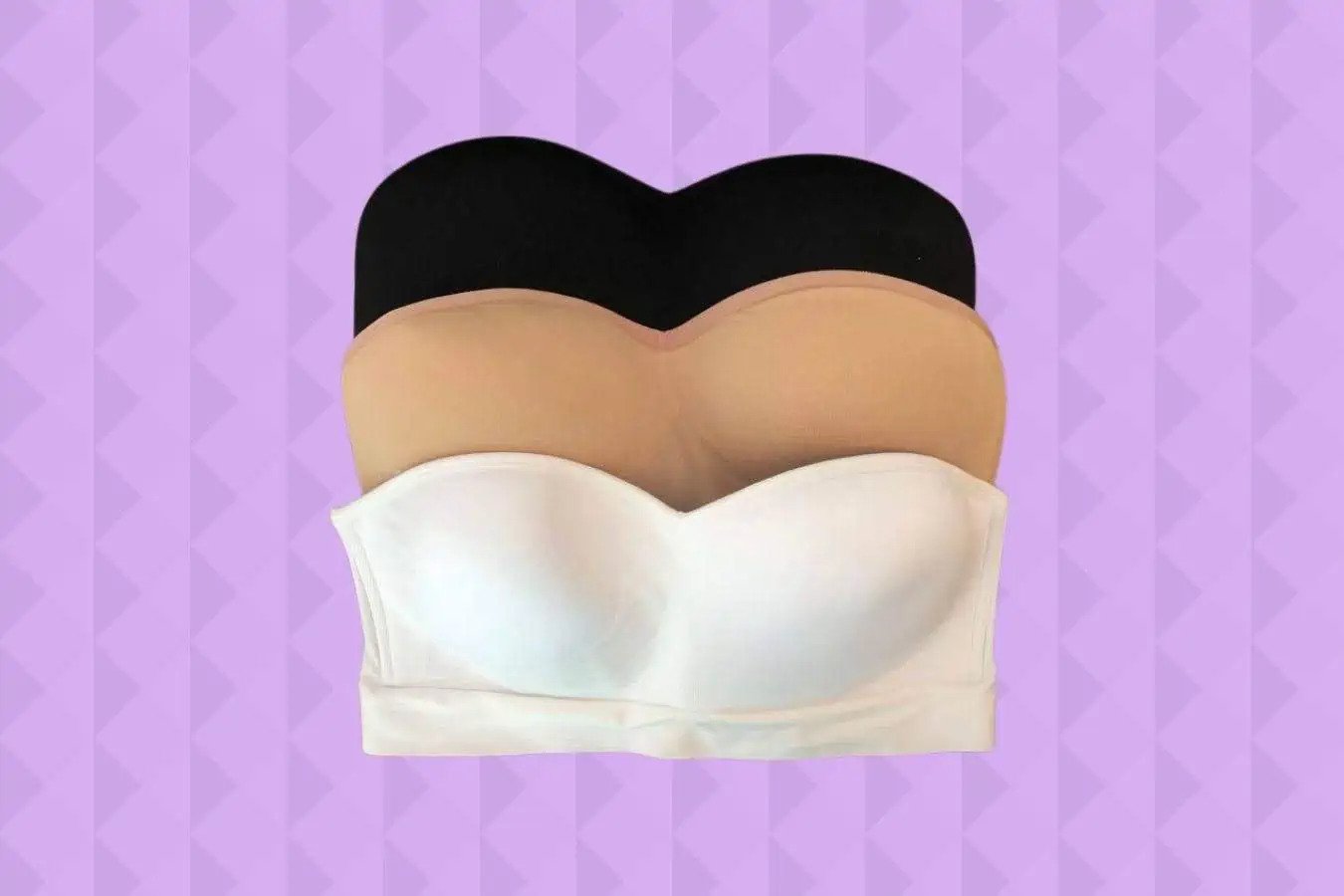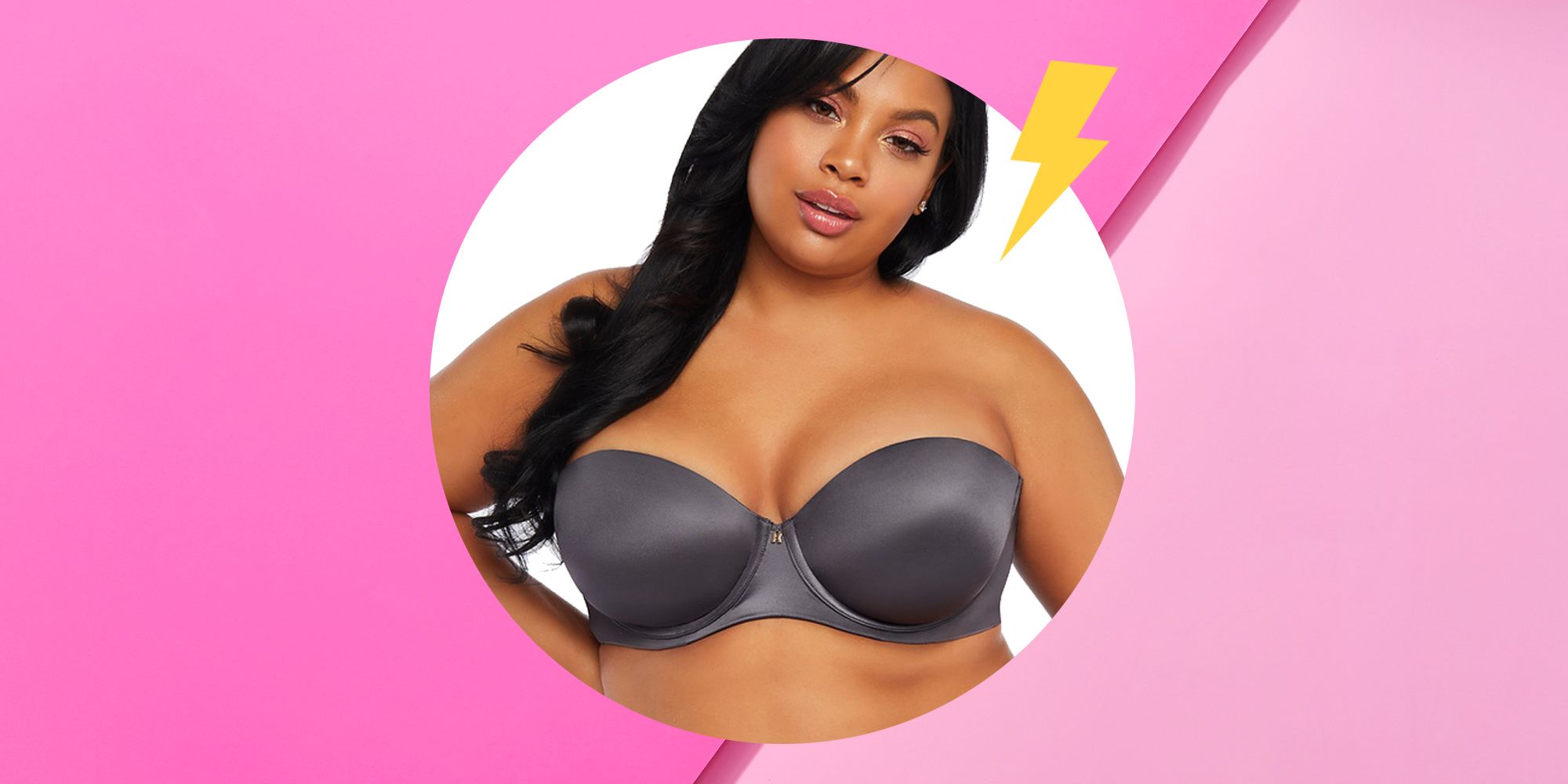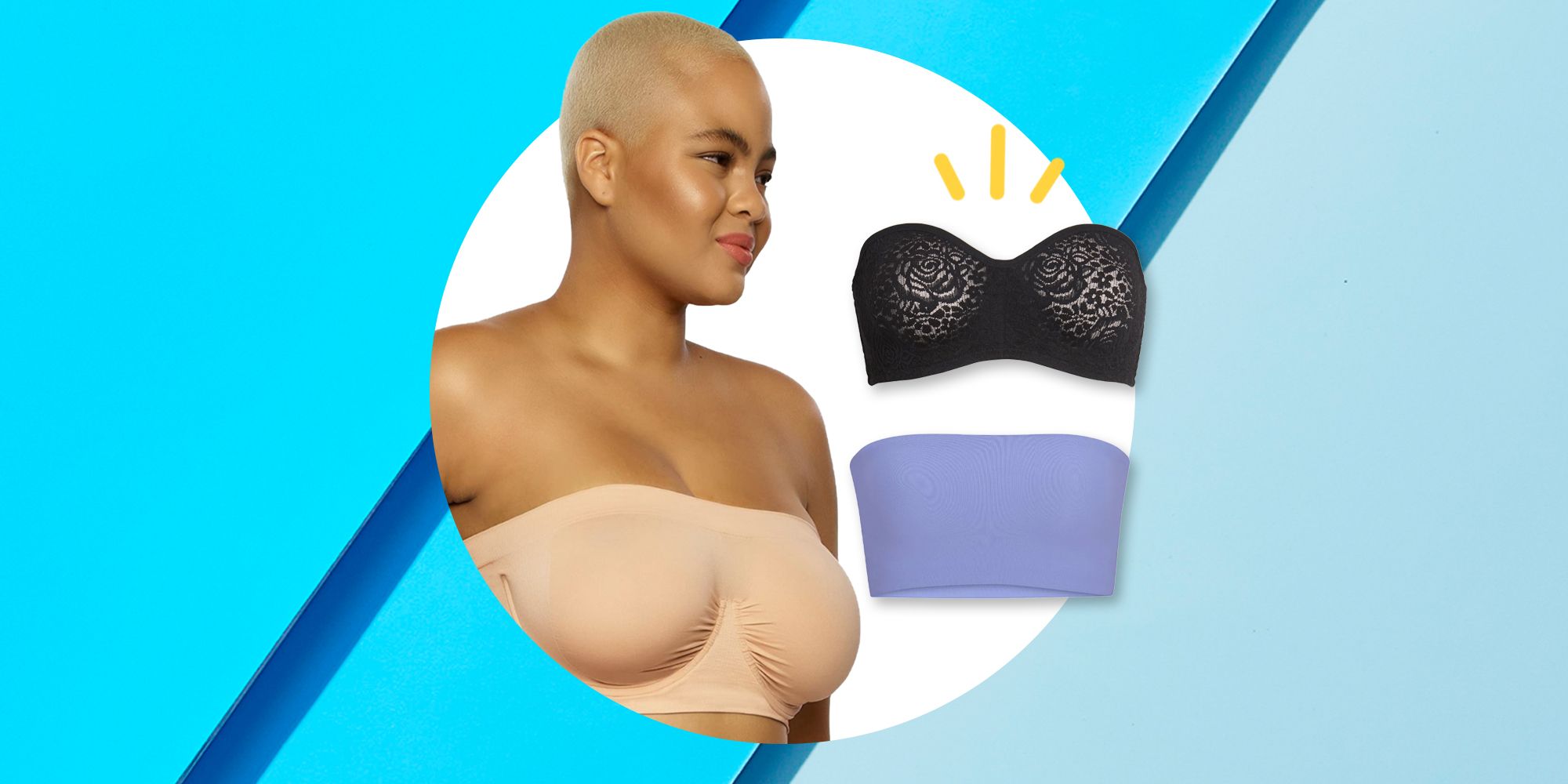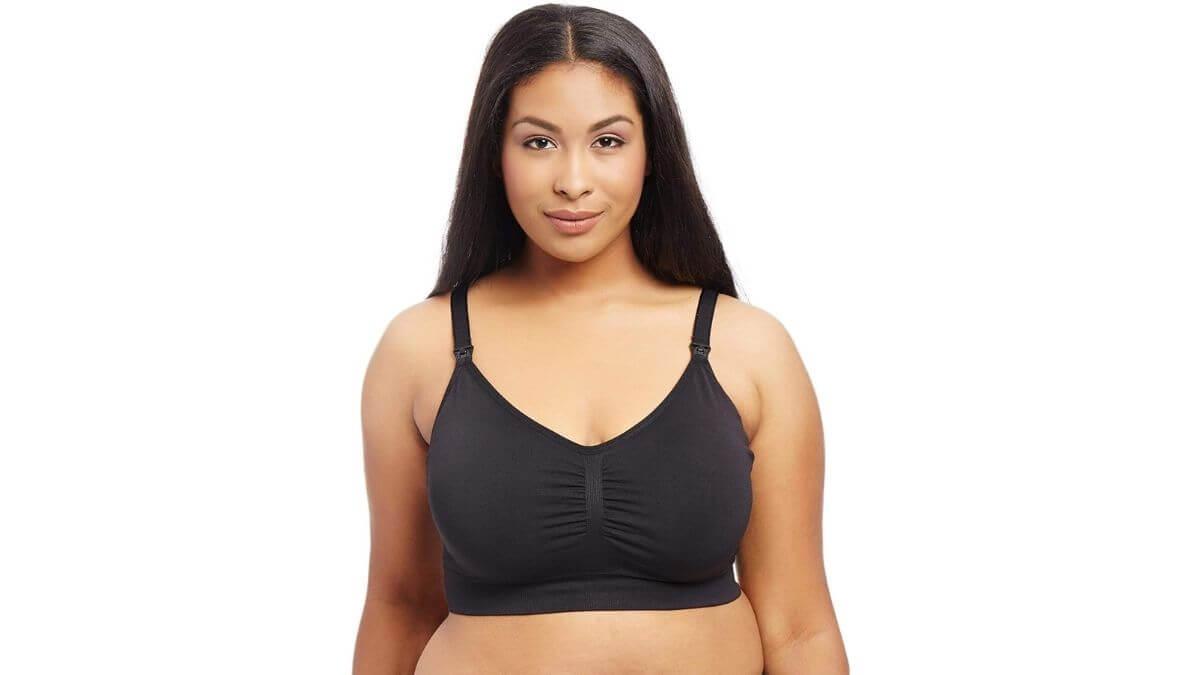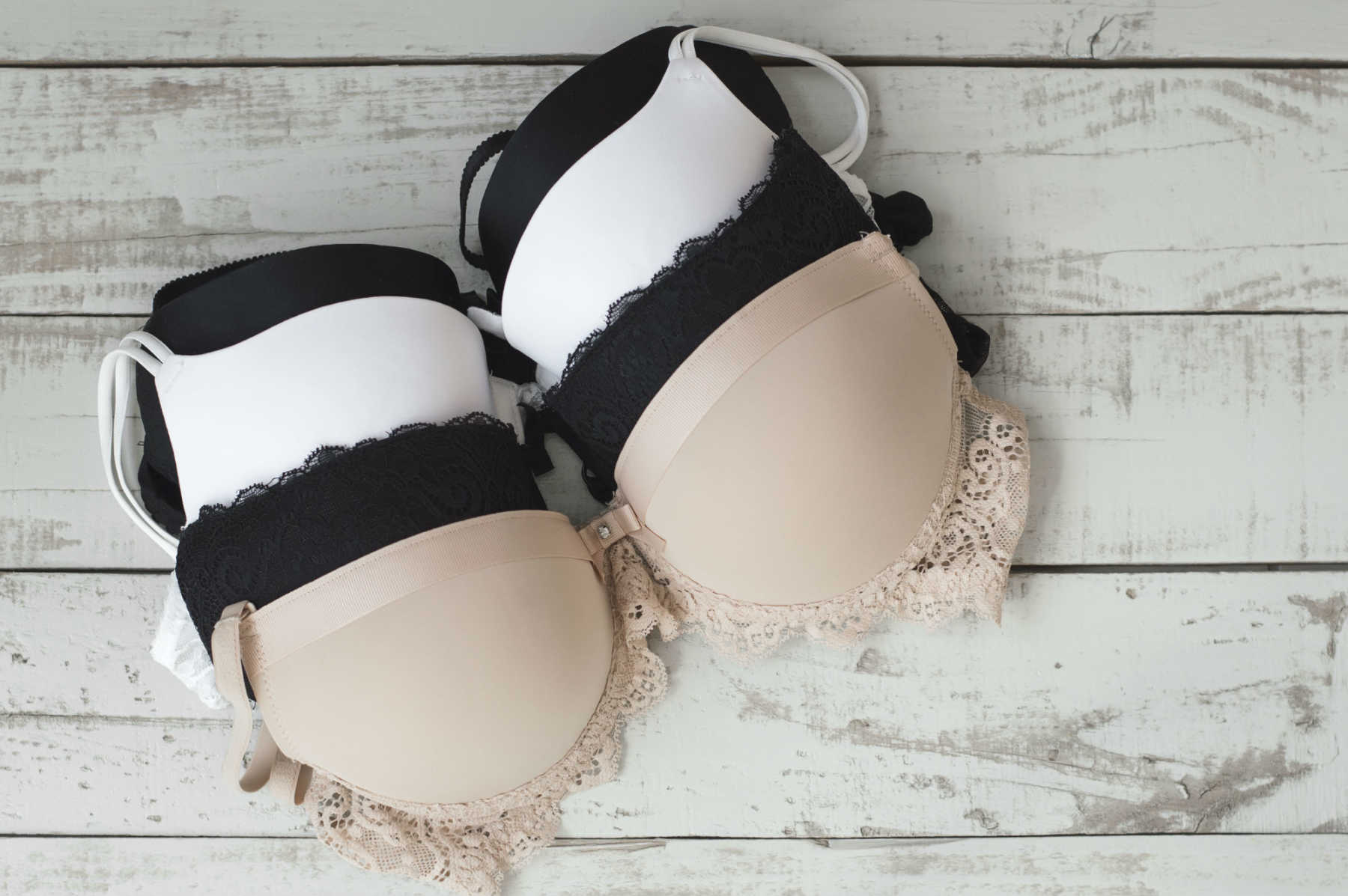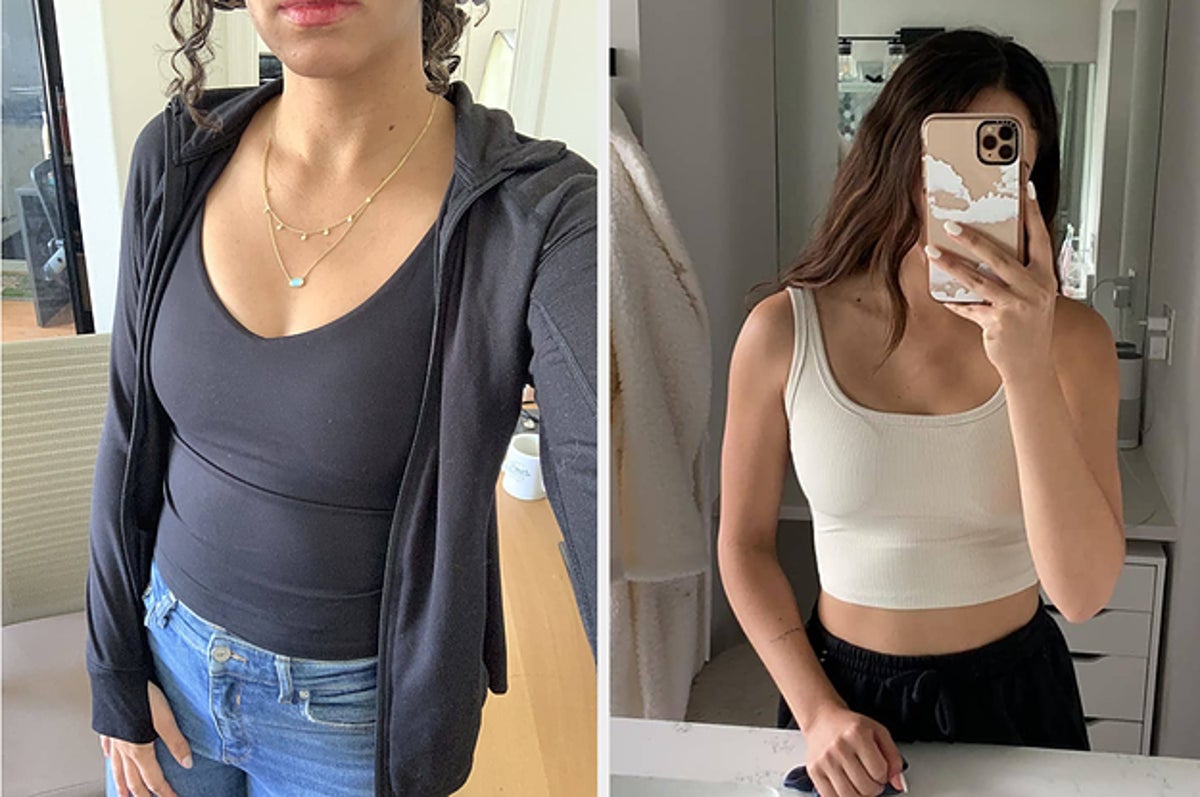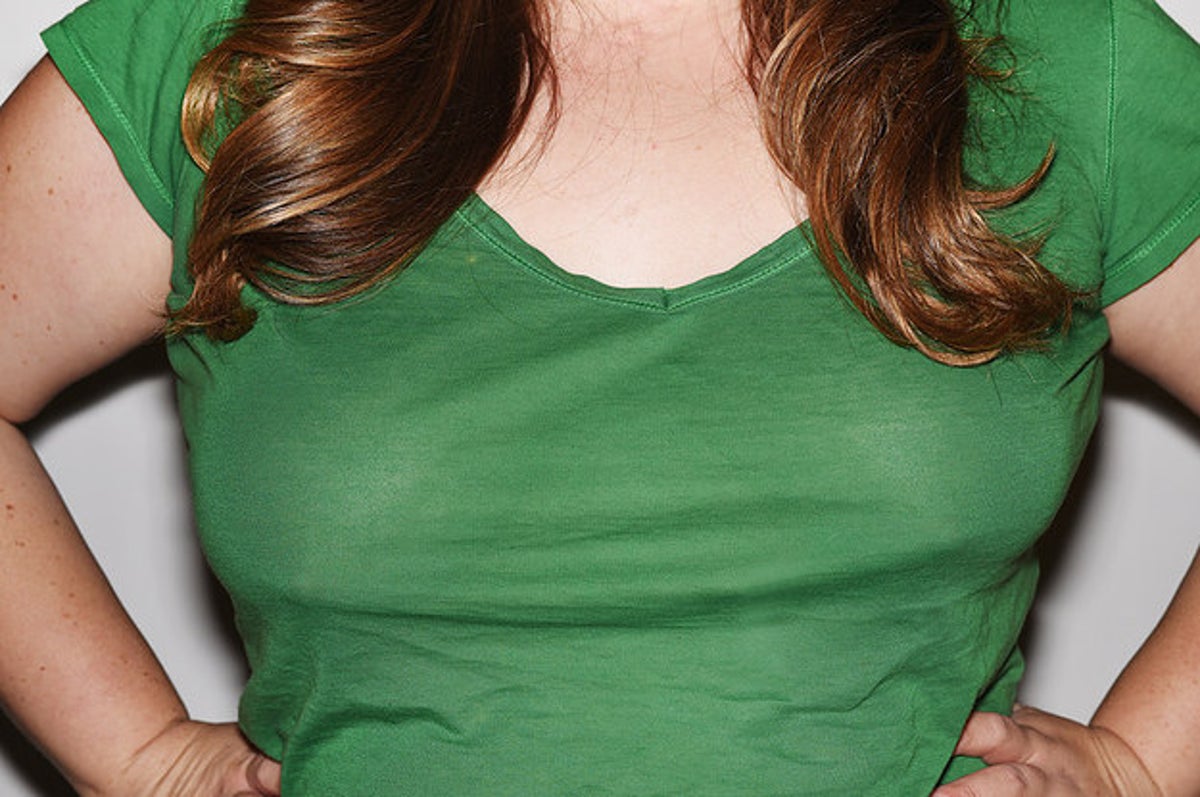Home>Women's Underwear>Bras>How To Wear A Nursing Bra
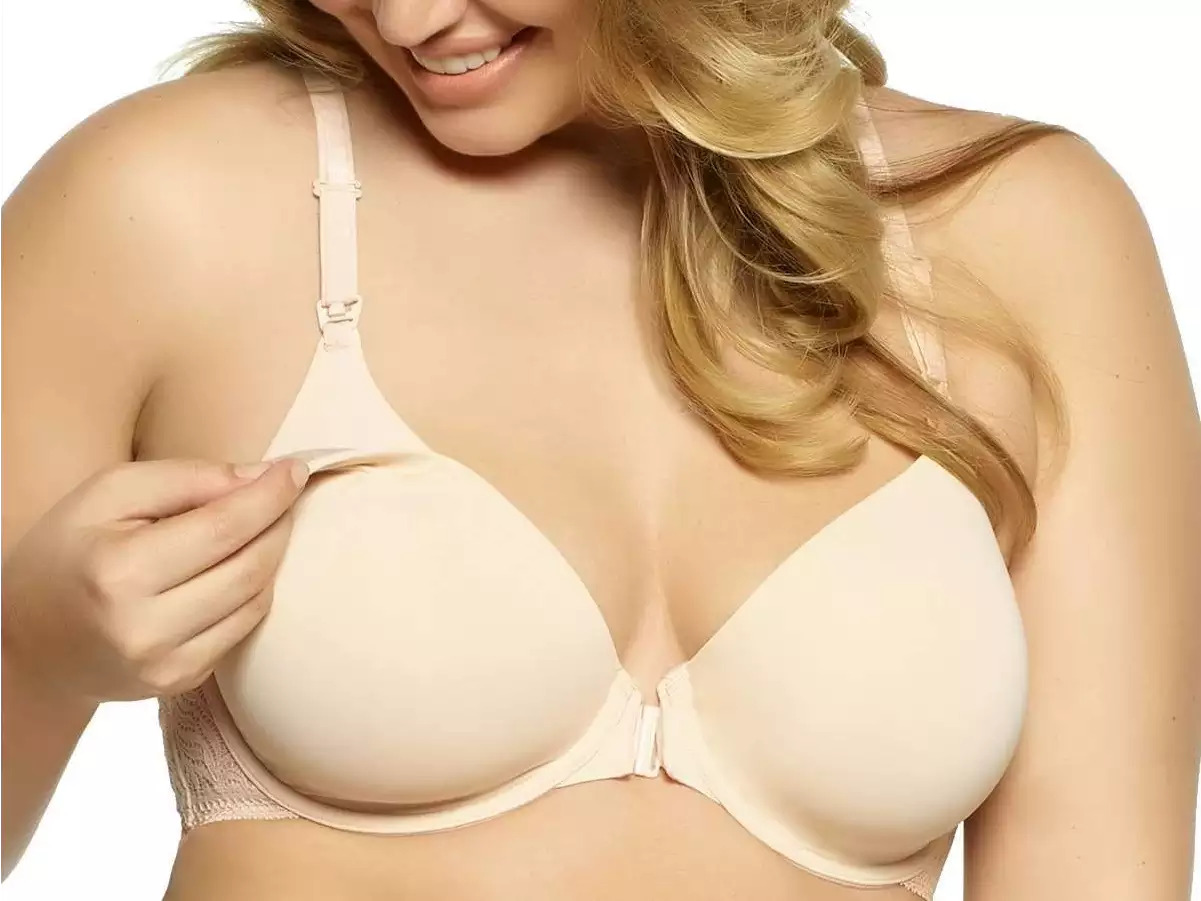

Bras
How To Wear A Nursing Bra
Modified: August 5, 2023
Learn how to properly wear a nursing bra for ultimate comfort and functionality. Discover different types of bras designed specifically for nursing moms.
(Many of the links in this article redirect to a specific reviewed product. Your purchase of these products through affiliate links helps to generate commission for Under-tec.com, at no extra cost. Learn more)
Table of Contents
Introduction
Being a new mother is a beautiful and transformative experience, but it also comes with its own unique set of challenges. One of these is finding the right nursing bra that provides comfort, support, and practicality. Whether you’re a first-time mom or have had previous experience, knowing how to wear a nursing bra can ensure a seamless breastfeeding journey.
A nursing bra is specially designed to accommodate changes in breast size and shape during pregnancy and breastfeeding. It provides easy access for nursing or pumping while offering much-needed support to prevent discomfort and sagging. Wearing the right nursing bra can make all the difference in your breastfeeding experience, allowing you to feel confident, comfortable, and at ease.
In this article, we will guide you through the process of choosing, fitting, and wearing a nursing bra. We will also provide helpful tips on how to care for your nursing bra to ensure its longevity and effectiveness. By the end, you’ll have all the knowledge you need to make informed decisions and embrace the benefits that a nursing bra brings.
Importance of a Nursing Bra
A nursing bra plays a crucial role in providing comfort, support, and convenience for breastfeeding moms. Here are some key reasons why a nursing bra is so important:
- Comfort: Nursing bras are designed with soft and stretchy fabrics that provide optimal comfort for sensitive breasts. They offer gentle support without restricting milk flow, allowing you to nurse your baby with ease.
- Easy Accessibility: The unique design of a nursing bra includes clips or clasps that easily open and close, granting quick access to breastfeed or pump. This accessibility is especially beneficial when you’re on the go or in public, providing discreet and convenient feeding options.
- Support: During pregnancy and breastfeeding, breast size and weight often fluctuate. A nursing bra provides the necessary support to lift and hold the breasts, reducing strain on the back and shoulders. This support can help prevent discomfort and potential breastfeeding complications.
- Prevention of Engorgement: Engorgement, which is the overfilling of milk in the breasts, can cause pain and discomfort. Nursing bras with proper support and fitting can help prevent engorgement by providing gentle compression and allowing efficient milk flow.
- Enhanced Milk Production: Wearing a well-fitting nursing bra can stimulate milk production by providing the right amount of pressure on the breasts. This can be particularly beneficial for moms who are struggling with low milk supply.
- Improved Breast Shape: Pregnancy, hormonal changes, and breastfeeding can have an impact on breast shape and elasticity. A nursing bra with its supportive design can help maintain the natural shape of the breasts, reducing the risks of sagging.
- Emotional Support: Breastfeeding is a precious bonding time between a mother and her child. Wearing a nursing bra that fits well and is comfortable can boost your confidence and emotional well-being, allowing you to focus on nurturing your baby without any distractions.
With all these benefits in mind, a nursing bra is an essential garment for any breastfeeding mom. It provides the necessary comfort, support, and accessibility needed to make the breastfeeding journey smoother and more enjoyable for both mother and child.
Choosing the Right Nursing Bra
Choosing the right nursing bra is crucial for ensuring comfort, support, and functionality throughout your breastfeeding journey. Here are some key factors to consider when selecting a nursing bra:
- Size: Proper sizing is essential for a nursing bra. Your breasts will undergo changes in size and shape during pregnancy and breastfeeding, so it’s important to measure yourself regularly and choose a bra that accommodates these changes. Consider getting professionally fitted to ensure an accurate size.
- Accessibility: Look for nursing bras with easy-to-use nursing clips or clasps that can be easily undone with one hand. This will allow for quick and hassle-free access when breastfeeding or pumping.
- Support: Opt for nursing bras with sufficient support to prevent discomfort and backache. Wide, adjustable straps and a supportive band under the bust are key features to look for. Consider bras with an additional inner support sling or wire-free designs for added comfort.
- Fabric: Choose nursing bras made from soft, breathable, and stretchy fabrics that won’t irritate sensitive skin and nipples. Look for fabrics that wick away moisture to help prevent rashes or infections.
- Style: Nursing bras come in various styles, including seamless, sports, and underwire. Consider your personal preferences and needs when choosing the style that suits you best. Remember that comfort and functionality should be prioritized over aesthetics.
- Adjustability: Look for nursing bras with adjustable straps and multiple hook-and-eye closures to accommodate changes in breast size and provide a personalized fit. This will allow you to adjust the bra as needed for maximum comfort and support.
- Durability: Nursing bras undergo frequent washing and wear, so choose ones made from durable materials that can withstand the rigors of daily use. Check for quality construction and reinforced stitching to ensure longevity.
Keep in mind that every woman’s body is unique, and what works for one may not work for another. It’s important to try on various brands and styles to find the nursing bra that fits you best. Don’t hesitate to seek professional advice or read reviews from other breastfeeding moms to guide your decision-making process.
Remember that your comfort and the ability to nurse your baby with ease should be the ultimate goals when choosing a nursing bra. Investing in a well-fitting and supportive nursing bra will provide you with the necessary foundation for a positive and enjoyable breastfeeding experience.
Measuring for the Perfect Fit
Accurate measurements are crucial when it comes to finding the perfect fit for a nursing bra. Here are some steps to help you measure yourself properly:
- Band Size: Take a measuring tape and wrap it snugly around your ribcage, just below your breasts. Ensure the tape is level and parallel to the ground. The measurement you get is your band size. If the measurement is an odd number, round it up to the nearest even number.
- Cup Size: Wearing a non-padded bra, take the measuring tape and wrap it around the fullest part of your breasts, making sure it’s parallel to the ground. Subtract your band measurement from this measurement. Use the difference to determine your cup size based on the following guide:
- 1-inch difference: A
- 2-inch difference: B
- 3-inch difference: C
- 4-inch difference: D
- 5-inch difference: DD or E
- 6-inch difference: DDD or F
- 7-inch difference: G
- 8-inch difference: H
- Trial and Error: Keep in mind that measurements are just a starting point. Different brands and styles may have different sizing standards, so it’s important to try on various sizes and styles to find the best fit for you. Look out for proper band support, cup coverage, and a comfortable fit around the underarms and back.
- Seek Professional Help: If you’re unsure about your measurements, consider seeking professional bra fitting assistance. Many specialty lingerie stores offer expert fitting services for nursing bras. Their knowledge and experience can help ensure you find the perfect bra that suits your unique needs.
Remember, as your body changes throughout pregnancy and breastfeeding, you may need to re-measure yourself at regular intervals to find an accurate and supportive fit. It’s worth investing the time and effort to find a nursing bra that provides optimal comfort and functionality, supporting you through your breastfeeding journey.
Putting on a Nursing Bra
Knowing how to properly put on a nursing bra can ensure maximum comfort and support. Here’s a step-by-step guide:
- Start with the Correct Size: Ensure you have the right size nursing bra based on accurate measurements. A proper fit is essential for comfort and functionality.
- Unclasp the Nursing Clips: Before putting on the bra, unclasp the nursing clips or clasps on the front of the bra. These allow for easy access when breastfeeding or using a breast pump.
- Hold the Cups: Hold the nursing bra by the center of the cups, with your thumbs inside the cups and your fingers on the outside. This will ensure the cups are correctly positioned and centered over your breasts.
- Slip Your Arms Through the Straps: Slip your arms through the shoulder straps and position them comfortably on your shoulders. Adjust the straps if necessary to achieve a snug yet comfortable fit.
- Fasten the Back Closure: Lean forward slightly and fasten the back closure. Start with the loosest hook and eye setting to allow for adjustments as your body changes. Make sure the band sits horizontally across your back and is level with the front of the bra.
- Secure the Nursing Clips: Adjust the positioning of your breasts within the cups, ensuring they are fully enclosed and supported. Then, secure the nursing clips or clasps in the front to hold the cups in place.
- Check for Comfort and Fit: Once the bra is on, check for comfort and fit. The bra should feel snug but not tight. The cups should fully enclose your breasts without any spillage or gaps, and the straps should not dig into your shoulders.
- Adjust as Needed: Throughout the day, you may need to readjust the straps or tightness of the band for optimal comfort and support. Listen to your body and make the necessary adjustments as needed.
Remember, every woman’s body is unique, so it may take some trial and error to find the most comfortable and supportive fit. Pay attention to how the nursing bra feels on your body and make adjustments accordingly. With practice, putting on a nursing bra will become second nature and contribute to a more enjoyable breastfeeding experience.
Adjusting the Straps and Closure
Properly adjusting the straps and closure of your nursing bra is essential for ensuring a comfortable and supportive fit. Follow these steps to achieve an optimal fit:
- Strap Length: Start by adjusting the length of the shoulder straps. The straps should be secure enough to provide support but not so tight that they dig into your shoulders. If the straps are falling off your shoulders, tighten them slightly. If they are digging in or causing discomfort, loosen them.
- Band Position: Take a look at the position of the band around your back. It should sit horizontally across your back, parallel to the ground. If the band is riding up or feels too tight, it may indicate that you need to adjust the closure or try a different band size.
- Back Closure: The back closure of a nursing bra typically has multiple sets of hook-and-eye closures. Start with the loosest setting to allow for adjustments as your body changes. Over time, if the bra becomes looser, you can move to a tighter setting to ensure a snug fit.
- Cup Coverage: Check that the cups fully enclose your breasts without any spillover or gaps. If the cups feel too tight or your breasts are overflowing, it may indicate that you need a larger cup size. On the other hand, if you have excess space in the cups, you may need to try a smaller cup size.
- Nursing Clips: The nursing clips or clasps on the front of the bra should be fastened securely to hold the cups in place. Ensure they are easy to open with one hand for quick and convenient access during breastfeeding or pumping.
- Comfort Check: Once you have made adjustments to the straps, closure, and nursing clips, do a comfort check. Move around, lift your arms, and bend forward to ensure the bra stays in place and provides the support you need without causing any discomfort.
- Regular Check-ins: Keep in mind that your body may undergo changes throughout the day, especially during breastfeeding. It’s important to regularly check the straps and closure to ensure a comfortable and supportive fit. Make adjustments as needed to maintain optimal comfort.
Remember, finding the perfect fit may require a bit of experimentation and adjustment. Listen to your body and make the necessary changes to achieve the most comfortable and supportive fit. With properly adjusted straps and closure, your nursing bra will provide the support you need while allowing for easy access during breastfeeding.
Supporting and Comfortable Designs
When it comes to nursing bras, there are various designs available that prioritize both support and comfort. Here are some popular designs worth considering:
- Wireless Bras: Wireless nursing bras are a popular choice for those seeking maximum comfort. They do not have underwire, providing a more gentle and flexible fit. These bras are ideal for everyday wear and are less likely to cause discomfort or pressure on sensitive breast tissue.
- Tank Tops with Built-In Bras: Tank tops with built-in nursing bras are versatile and convenient options. They provide both support for your breasts and coverage for your torso. These designs are great for layering and can be worn as standalone tops during warmer weather.
- Sleep Bras: Sleep bras are specially designed for nighttime comfort and support. These bras typically have soft, stretchy fabrics and minimal support, allowing for easy access during nighttime feedings. Sleep bras are perfect for those looking for an extra level of comfort during sleep and lounging.
- Seamless Bras: Seamless nursing bras are constructed without any seams, providing a smooth silhouette and reducing the risk of irritation or chafing. These bras are particularly great for those with sensitive skin or those seeking a sleek and invisible look under clothing.
- Sports Bras: For active moms, sports nursing bras offer the necessary support for physical activities while still providing easy access for breastfeeding or pumping. These bras often have adjustable straps, moisture-wicking fabrics, and additional support features to keep you comfortable throughout your workout.
- Full-Cup Bras: Full-cup nursing bras are designed to fully enclose and support the entire breast. They offer excellent coverage and support, making them ideal for those with larger breasts or those who desire extra support and coverage.
- Convertible Bras: Convertible nursing bras are versatile options that can be worn in multiple ways to accommodate various outfits. They typically have removable straps or multiple strap positions, allowing you to customize the bra to fit your needs.
When choosing a nursing bra design, consider your personal preferences, lifestyle, and specific needs. Remember, the most important factors to prioritize are support, comfort, and functionality. Try on different designs to see what works best for your body and choose the one that provides the best combination of support and comfort for your breastfeeding journey.
Finding the Right Style for Your Needs
When it comes to nursing bras, finding the right style is crucial for meeting your specific needs and preferences. Here are some factors to consider when choosing the style of your nursing bra:
- Daily Wear: If you’re looking for a nursing bra for everyday wear, comfort and support should be your top priorities. Opt for styles that offer all-day comfort, adjustable straps, and easy-to-use nursing clips or clasps.
- Special Occasions: For special occasions or when you want a more feminine and attractive look, consider nursing bras with lace detailing, embroidery, or stylish designs. These bras can make you feel confident, beautiful, and comfortable at the same time.
- Workout and Active Wear: If you plan to exercise or engage in physical activities while breastfeeding, invest in a supportive sports nursing bra. Look for designs with moisture-wicking fabrics, adjustable straps, and additional support features to ensure maximum comfort and stability during your workouts.
- Accessibility: The ability to easily breastfeed or pump while on the go or in public is important to many moms. Nursing bras with front-opening nursing clips or clasps provide the convenience and discretion you need for hassle-free nursing whenever and wherever it’s needed.
- Breast Shape: Consider the shape and size of your breasts when choosing a nursing bra style. Some styles, like full-cup bras, provide more coverage and support for larger breasts. Others, like seamless bras, offer an invisible look and a smooth silhouette for those who prefer a more natural shape.
- Personal Comfort: Comfort is subjective, and what works for one person may not work for another. Pay attention to how the bra feels on your body and make sure the style you choose aligns with your personal comfort preferences, whether it’s wireless, padded, or with wider straps.
- Versatility: If you’re looking for a nursing bra that can adapt to different outfits and occasions, consider convertible styles. These bras often come with removable straps or multiple strap positions, allowing you to customize the bra to suit your needs.
- Multipack Options: Some nursing bras are available in multipack options, which can be a cost-effective solution, especially during the early stages of breastfeeding when you may need multiple bras for frequent nursing and washing. These packs often offer different styles or colors to suit your preferences.
It’s important to find a nursing bra style that suits your individual needs and makes you feel comfortable and confident. Remember to prioritize comfort, support, and convenience when making your selection. Trying on different styles can help you determine the best fit and style for your breastfeeding journey.
How to Care for Your Nursing Bra
Proper care and maintenance of your nursing bra are essential to ensure its longevity and effectiveness. Here are some tips on how to care for your nursing bra:
- Follow the Care Instructions: Always follow the care instructions provided by the manufacturer. This typically includes information on machine-washing, hand-washing, and drying methods.
- Hand-Wash or Machine-Wash with Care: Depending on the specific care instructions, you can choose to hand-wash or machine-wash your nursing bras. If machine-washing, use a gentle cycle and place the bras in a lingerie bag to protect them from getting tangled with other garments.
- Use Mild Detergent: Use a mild, fragrance-free, and dye-free detergent to prevent skin irritation and damage to the fabric. Avoid using bleach or harsh chemicals that can affect the integrity of the bra’s materials.
- Air Dry or Low Heat: It’s generally recommended to air dry your nursing bras to prevent shrinkage and maintain their shape. If using a dryer, select a low heat setting or delicate cycle to minimize potential damage to the fabric and elastic components.
- Avoid Direct Heat and Sunlight: Never dry your nursing bras in direct sunlight or near a direct source of heat, such as a radiator or heater. Excessive heat can cause the fabric and elastic to deteriorate and lose their elasticity.
- Rotate Between Bras: To extend the lifespan of your nursing bras, it’s beneficial to rotate between several bras and not rely solely on one. Alternating between bras allows them to regain their shape and prevents excessive wear and tear on a single bra.
- Avoid Fabric Softeners: Fabric softeners can leave a residue on the fabric and affect the absorbency of the nursing pads. It’s best to avoid using fabric softeners when caring for your nursing bras.
- Store Properly: When not in use, store your nursing bras flat or folded in a drawer or dedicated storage container. Avoid tightly squeezing or stuffing them, as it can damage the bra’s shape and elastic.
- Check for Wear and Tear: Regularly inspect your nursing bras for signs of wear and tear, such as stretched out straps, loose stitching, or damaged clasps. If you notice any issues, repair or replace the bra as needed to maintain optimal comfort and support.
- Reassess Fit: As your body changes during the breastfeeding journey, periodically reassess the fit of your nursing bras. Your size may fluctuate, and it’s important to ensure the bras still provide the support and comfort you need.
By following these care tips, you can prolong the life of your nursing bras and maintain their functionality. A well-cared-for nursing bra will continue to provide the comfort and support you require throughout your breastfeeding journey.
Tips for Wearing a Nursing Bra
Wearing a nursing bra can enhance your breastfeeding experience and provide optimal comfort and support. Here are some helpful tips to consider when wearing a nursing bra:
- Proper Positioning: Position your breasts fully in the cups of the nursing bra to ensure proper support and a secure fit. Adjust the positioning as needed to prevent any spillage or discomfort.
- Practice Nursing Techniques: Familiarize yourself with various nursing positions and techniques that work best for you and your baby. This will help you find the most comfortable and efficient way to breastfeed while wearing a nursing bra.
- Stay Hydrated: Stay hydrated by drinking plenty of fluids throughout the day. Proper hydration promotes healthy milk production and ensures your breasts are comfortable and moisturized.
- Invest in Nursing Pads: Nursing pads can be used inside the cups of your nursing bra to absorb any leakage. There are disposable and reusable options available, so choose the one that suits your preference and needs.
- Wear a Nursing Tank Top: Pair your nursing bra with a nursing tank top for added convenience and coverage. Nursing tank tops typically have built-in bras and offer easy access for breastfeeding.
- Stay Active and Mobile: Wearing a supportive nursing bra allows you to stay active and mobile while breastfeeding. Engage in light exercises or simply move around, as it can assist with milk flow and promote overall well-being.
- Check for Red Flags: Pay attention to any redness, irritation, or discomfort around your breasts. These may indicate an ill-fitting bra or potential breastfeeding complications. If you have concerns, consult a lactation consultant or healthcare professional.
- Carry Spare Nursing Bras: While on the go, consider carrying a spare nursing bra in case of any leakage or unexpected situations. Having a backup bra ensures you can stay comfortable and prepared throughout the day.
- Practice Self-Care: Take care of yourself emotionally and physically during the breastfeeding journey. This may involve finding time for relaxation, seeking support from loved ones or support groups, and prioritizing your own well-being.
- Listen to Your Body: Every woman’s breastfeeding experience is unique, so it’s important to listen to your body and make adjustments as needed. If something feels uncomfortable or you need additional support, consider consulting professionals or seeking advice from experienced moms.
By following these tips, you can make the most out of wearing a nursing bra and create a comfortable and enjoyable breastfeeding experience for both you and your baby. Remember, finding the right balance between comfort, support, and convenience is key when it comes to wearing a nursing bra.
Conclusion
Choosing and wearing a nursing bra is an important part of the breastfeeding journey. A well-fitting and supportive nursing bra can provide comfort, convenience, and confidence for breastfeeding moms. By considering factors such as size, style, and design, you can find the perfect nursing bra that meets your specific needs and preferences.
Remember to measure yourself accurately, ensuring a proper fit that accommodates the changes in your breast size and shape during pregnancy and breastfeeding. Adjusting the straps and closure of your nursing bra is crucial for achieving optimal comfort and support. Taking care of your nursing bras by following the care instructions and regularly assessing their condition will ensure their longevity and effectiveness.
When wearing a nursing bra, use helpful tips such as proper positioning, practicing nursing techniques, and staying hydrated to enhance your breastfeeding experience. Invest in additional accessories like nursing pads and consider wearing nursing tank tops for added convenience and coverage.
Lastly, always listen to your body and seek assistance or advice when needed. Every woman’s breastfeeding journey is unique, and finding what works best for you may require some trial and error. Remember to prioritize your comfort and well-being as you navigate this special time with your baby.
With the right nursing bra and a little bit of knowledge, you can confidently and comfortably embrace the benefits of breastfeeding while ensuring the best possible experience for both you and your baby.
